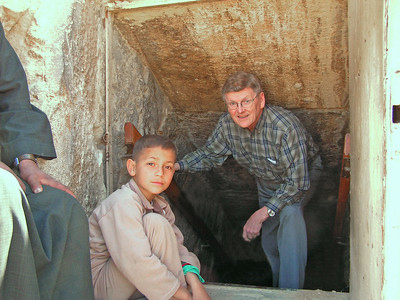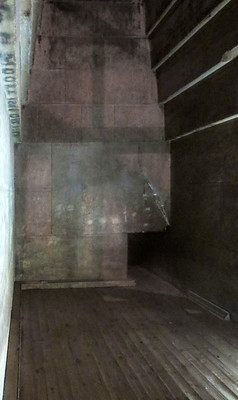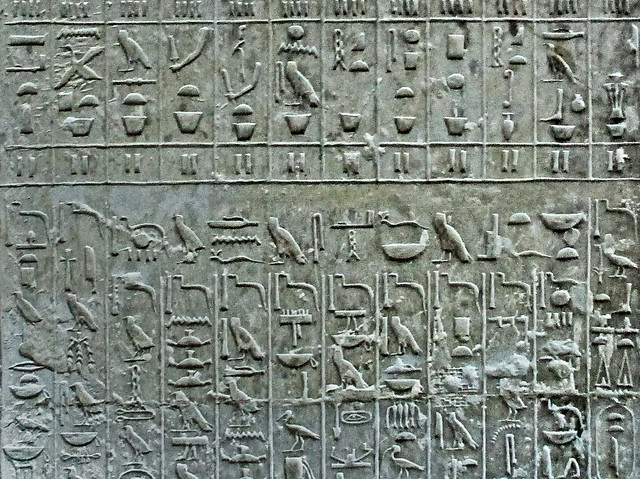But that shouldn't dissuade you from making the trip into the heart of at least one to see for yourself.
I had been inside of three prior to this year and added a fourth during a recent tour of the Dahshur pyramids.
My favorite is the Red Pyramid at Dahshur, just about twenty miles south of our winter home.

This pyramid is almost 350 feet tall. There is an opening in the north face of the pyramid about a third of the way up, just a bit to the left of where Linda is standing in the picture. A trail and stairway lead to the opening.
In past years, Egypt's best mounted police stood guard at the foot of the pyramid while helpers stood at the actual opening ready to assist visitors in navigating the narrow passage.


The passageway is only about four feet wide and four feet high; it descends over a length of perhaps 300 feet to around ground level. This is best traveled in reverse, holding on to a railing during the descent phase.

About halfway down, the thought will occur that you have to go back up the same way, bent over. It is a bit like descending into the Grand Canyon, the hard part comes later and you can't quit part way through.
Once you are at the bottom, you are not "there" yet. Two chambers, slightly offset, are connected by a small passage and then a tall wooden scaffolding awaits you.


At the top of the scaffold, another small passage takes you to a the third chamber and the probable final resting place of king Sneferu.


The construction style of these chambers is apparently known as "corbel vaulting."


That final chamber is disappointing as a final destination, if you were expecting something like the tombs in the Luxor area.
Poor Sneferu - this was his third attempt at building himself a pyramid and no one has yet found his grave for certain.
If my description of the route was hard to follow, perhaps a picture would help. Fortunately, we have this diagram available on Wikipedia.
Now,Linda thinks that I spend way too much time getting pictures ready for the blog. But notice what R. F. Morgan has done here - prepared a 3D computer model of the pyramid with detailed sketches of those chambers and passages! Most people would simply capture this image from Wikicommons and move on. Not I! Who is R F Morgan and what does this person do for a living?
Robin F. Morgan is a feminist and author who was obviously bitten by the "Egypt Bug" as so many visitors to this country are. She has drawn 3D models of most of the pyramids and the tombs at Valley of the Kings. And, the models actually include YouTube video to take you inside. Here is the link to her Red Pyramid tour. You can easily get to more of her YouTube models from there.
==============================================
If the descent and climb into the Red Pyramid sounds like too much effort, there are two smaller pyramids at Saqqara that you might like to tour.
The pyramid of Unas and its ground-level opening would be easy to miss while you are looking to the north toward the giant step-pyramid.


Likewise, the pyramid of Teti could be easily missed while heading to see nearby temple drawings. It is not a pile of dirt you're seeing in this photo. It's a crumbling pyramid.

The descent ramps have modest slopes compared to the larger pyramids.


The final tomb chamber is reached by another of those very low passages. But the wall of this tomb is inscribed with the famous "Pyramid Texts." The words "magic" and "spells" are frequently associated with these writings - approach with caution!









No comments:
Post a Comment